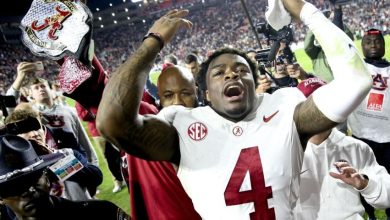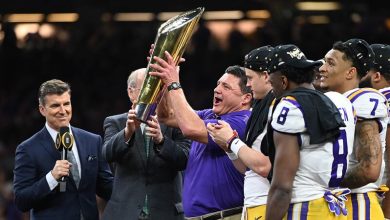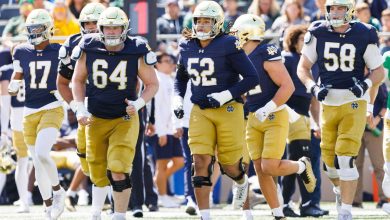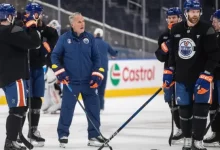Dennis Allen focuses on aggressive pass rush, improving secondary coverage, and emphasizing discipline in tackling to transform the Bears defense into a more cohesive, formidable unit.
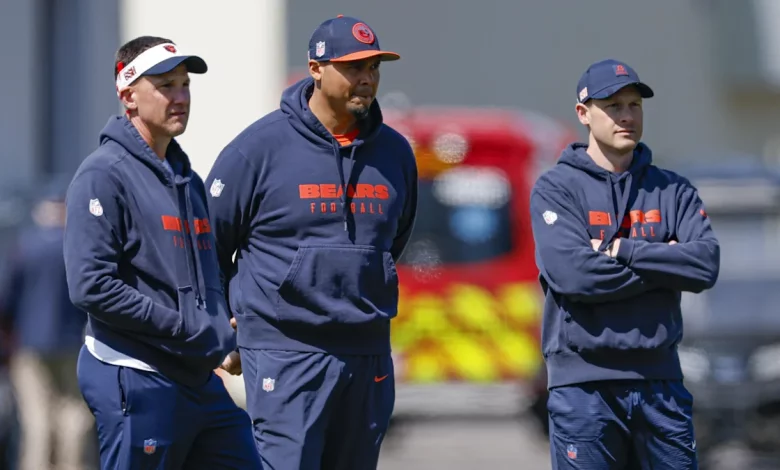
When the Chicago Bears announced the hiring of Dennis Allen to spearhead their defensive revival, reactions across the NFL ranged from curiosity to cautious optimism. Known for his cerebral approach, Allen brings a wealth of experience to a once-proud franchise in dire need of defensive identity. Once nicknamed the “Monsters of the Midway,” the Bears’ defense has recently been anything but monstrous. Over the past few seasons, Chicago’s defense has suffered from inconsistent play, a lack of aggression, and subpar execution—hallmarks unrecognizable to fans who remember the legacies of Dick Butkus, Mike Singletary, and Brian Urlacher.
To address the systemic issues plaguing the Bears, Dennis Allen is implementing a three-pronged approach: an aggressive pass rush, improved secondary coverage, and a renewed emphasis on discipline in tackling. These pillars not only reflect his coaching philosophy but also offer a roadmap for restoring the pride and power of Chicago’s defense.
1. Aggressive Pass Rush: Creating Chaos Up Front
Dennis Allen knows that great defenses begin in the trenches. During his tenure with the New Orleans Saints, one of the key drivers of their defensive success was a relentless and strategic pass rush. Allen understands that pressuring opposing quarterbacks is the fastest way to disrupt an offense and create turnovers.
In Chicago, Allen inherits a defensive line that has shown flashes of potential but lacks the consistent disruption needed to change games. His first order of business has been to ramp up the aggressiveness of the defensive front. This includes implementing more complex blitz packages, utilizing stunts and twists, and emphasizing quick get-offs at the snap.
Key to this transformation is the development of young pass rushers. Players like Montez Sweat, acquired in a bold mid-season trade in 2023, are expected to thrive under Allen’s system. Sweat’s combination of length, speed, and motor makes him an ideal fit for Allen’s aggressive scheme. In addition, Allen is working closely with defensive line coaches to develop rotational depth, ensuring that pressure can be maintained throughout four quarters.
Allen also places heavy emphasis on interior pressure, recognizing that collapsing the pocket from the middle can be just as disruptive as edge rush. This approach forces quarterbacks off their spot and often into the arms of waiting defenders. By teaching his linemen to maintain gap integrity while still attacking the quarterback, Allen ensures that the Bears can both rush the passer and contain the run.
2. Improved Secondary Coverage: Turning Vulnerability into Strength
While the pass rush is designed to force hurried throws, it’s up to the secondary to capitalize on those mistakes. In recent years, the Bears’ defensive backs have struggled in man-to-man situations and have often appeared lost in zone coverages. Opposing offenses have exploited these vulnerabilities with ease, especially late in games when coverage breakdowns have cost the Bears crucial wins.
Allen’s experience as a secondary coach gives him a unique edge in this area. Early reports from training camp indicate that he is emphasizing technique, communication, and accountability within the defensive backfield. Safeties and corners are being drilled on route recognition, proper leverage, and ball skills—skills that have been lacking in Chicago’s recent defensive efforts.
A major focus of Allen’s strategy is situational awareness. He’s teaching defensive backs to read offensive alignments, anticipate route combinations, and communicate shifts pre-snap. In today’s NFL, where offenses are increasingly dynamic and quick-strike, defensive backs must be smart, fast, and adaptable. Allen is building that mindset from the ground up.
Veteran leadership will also play a crucial role. Players like Jaylon Johnson are expected to serve as mentors to younger DBs, ensuring that the unit operates as a cohesive whole. Allen is also evaluating how to maximize the talents of emerging players like Kyler Gordon and Jaquan Brisker, using film study and hands-on coaching to refine their instincts and discipline.
Under Allen, the Bears are likely to feature a mix of man and zone coverage, with an emphasis on disguising looks pre-snap. This unpredictability forces quarterbacks to hesitate—an advantage Allen aims to exploit consistently.
3. Tackling Discipline: Fundamentals Over Flash
One of the most overlooked elements in modern NFL defenses is tackling. Missed tackles extend drives, demoralize defenses, and lead to explosive plays—something Bears fans saw far too often in recent seasons. Dennis Allen recognizes this and is taking a back-to-basics approach when it comes to tackling.
In every practice, tackling technique is emphasized. Players are drilled on proper angles, wrapping up securely, and finishing plays. Poor tackling often stems from bad habits formed over time—diving without wrapping, relying on shoulder hits, or failing to break down before contact. Allen is working to eliminate these habits and instill consistency across all levels of the defense.
Beyond technique, Allen is instilling a culture of accountability. Missed tackles are reviewed thoroughly in film sessions. Players are expected to take ownership of mistakes and correct them. This cultural shift is perhaps Allen’s most underrated tool. By emphasizing discipline and attention to detail, he is re-establishing the Bears’ defensive identity as a unit that plays smart, fast, and tough football.
Allen is also focusing on tackling in space—a necessity in today’s pass-heavy league. As offenses spread the field with screens, swing passes, and quick outs, defenders must be able to make open-field tackles one-on-one. Through live drills and simulated game scenarios, Allen is preparing his players to handle these situations effectively.
The Bigger Picture: A Philosophical Shift
Dennis Allen’s three-pronged approach isn’t just about X’s and O’s—it’s about changing the culture. The Bears haven’t lacked talent as much as they’ve lacked execution and cohesion. Allen’s mission is to unify the defense under a shared identity—one built on aggressiveness, precision, and pride.
He’s also working closely with head coach Matt Eberflus and GM Ryan Poles to ensure personnel decisions reflect the team’s new defensive philosophy. Whether through the draft, free agency, or trades, Allen is helping identify players who fit his scheme and mentality. The result is a roster that not only performs better on the field but also brings a consistent, high-energy presence to the locker room.
Communication is another major element of Allen’s overhaul. On-field communication between linebackers and the secondary is being streamlined. The goal is to eliminate coverage breakdowns and ensure that every defender understands their role on each play. In a league where split-second decisions often determine the outcome of games, this clarity can be a game-changer.
Challenges Ahead
Despite the clear strategy and renewed energy, Dennis Allen’s task is not without its challenges. The Bears play in the tough NFC North, home to rising offenses led by quarterbacks like Jordan Love and Jared Goff. The margin for error is small, and the pressure to show immediate improvement is immense.
There’s also the matter of injuries and depth. A few key injuries could quickly derail progress, especially if backups aren’t fully prepared to step in. Allen is mitigating this risk by cross-training players at multiple positions and ensuring that backups receive meaningful reps in practice.
Additionally, implementing a new system takes time. Growing pains are inevitable, especially early in the season. There may be games where execution lags behind intent. But if Allen’s past success is any indicator, the Bears should see steady progress as the year unfolds.
A Return to Form?
Dennis Allen’s approach to rebuilding the Bears’ defense is systematic, rigorous, and grounded in fundamental football principles. By focusing on an aggressive pass rush, strengthening secondary coverage, and reinforcing tackling discipline, Allen is laying the groundwork for a unit that can once again strike fear into opposing offenses.
It won’t happen overnight. But with patience, execution, and buy-in from players, the Bears have a real opportunity to reclaim their identity as one of the NFL’s elite defenses. For a fan base starved for relevance and respect, Dennis Allen’s blueprint offers something invaluable: hope.
And in a city like Chicago, where defense has always been more than just a phase—it’s a tradition—hope might be the first real sign that the Monsters of the Midway are finally ready to roar again.
Would you like this formatted for a blog or article post? I can also help create section headers, social media previews, or summaries.



